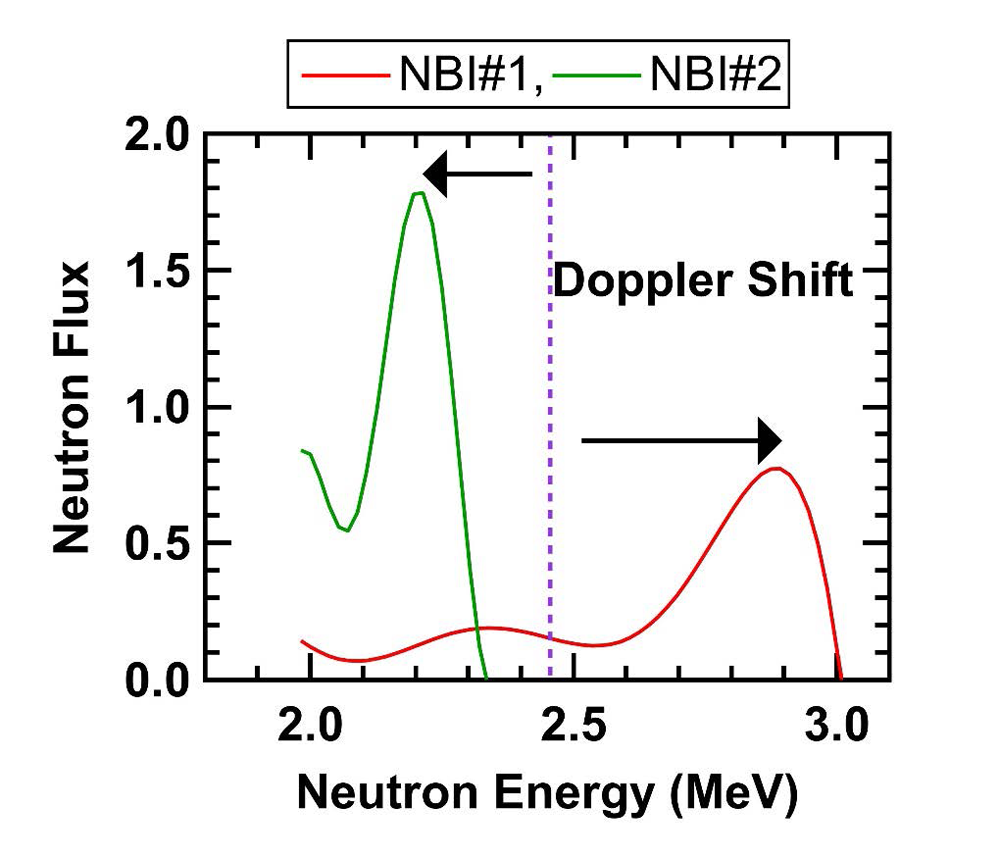Observation of anisotropy of energetic particles
We have observed the Doppler shift of neutron energy in deuterium plasma experiments in the Large Helical Device (LHD) by using a neutron energy spectrometer. By comparing the results with an orbit following numerical simulation, we have shown that there is an anisotropy in the velocity distribution of energetic particles confined in plasma. This achievement will contribute to the deepening of research on the confinement of energetic particles.

Future fusion-burning plasmas will be heated by alpha particles produced by fusion reactions. However, there is a concern that alpha particles will be transported by the interaction between these alpha particles and waves in the plasma. To understand and predict the behavior of alpha particles in fusion-burning plasmas, confinement studies of energetic ions using beam ions have been conducted in the Large Helical Device (LHD). The spatial pressure gradient of energetic particles is considered to be important in the excitation of waves in this plasma, but theoretical simulations predict that it is also related to the velocity distribution of energetic particles.
In order to deepen the interaction between alpha particles and waves in the plasma of future fusion reactors, the research team observed the velocity distribution of energetic particles by acquiring neutron energy distributions in deuterium plasma experiments in LHD. In deuterium plasmas, neutrons are mainly produced by the reaction between energetic particles and main plasma particles. Since the velocity of the energetic particles is very high, the energy of the neutrons produced reflects the velocity of the energetic particles. If the velocity distribution of the energetic particles is isotropic, the neutron energy spreads according to the velocity of the energetic particles, but if the velocity distribution of the energetic particles is anisotropic, the neutron energy takes a Doppler shifted form according to the velocity of the energetic particles.
By using a compact neutron spectrometer developed by this research team, the Doppler shift in neutron energy was measured. Subsequently, energetic particle orbit following simulations based on experimental data were performed. The neutron energy distribution obtained in the numerical simulations was in good agreement with the experimental observations, indicating anisotropy in the velocity distribution of energetic particles. This contributes to the deepening of the interaction between energetic particles and waves in plasmas.
This work was supported by a research group led by Kunihiro Ogawa and Mitsutaka Isobe of the National Institute for Fusion Science, in collaboration with Dr. S. Sangaroon of Mahasarakham University, Thailand, and Dr. Z. Q. Zhong of the Institute of Plasma Physics, Chinese Academy of Sciences.
The results of this research were published on May 21, 2024 in Nuclear Fusion, a journal on controlled thermonuclear fusion by the International Atomic Energy Agency.
